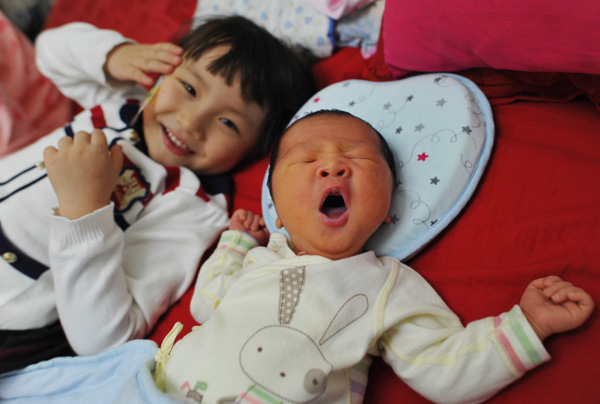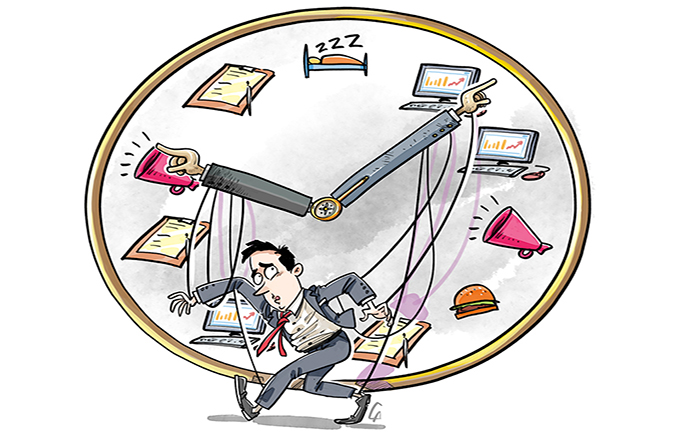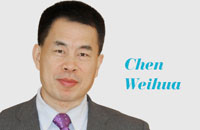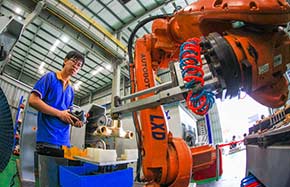For demographic balance, boosting birth rate de rigueur
 |
|
A girl plays with her newborn brother at a hospital in Nanjing, Jiangsu province,on Oct 24. 2014. [Photo/VCG] |
CHINA'S WORKING AGE population, namely people aged between 15 and 59, reached its peak in 2010, said Cai Fang, vice-president of the Chinese Academy of Social Sciences in a recent speech. Beijing News commented on Thursday:
If China's working age population peaked in 2010, it means the country's demographic dividend has been waning ever since.
The demographic dividend guaranteed a sufficient, cheap labor supply, allowing Chinese enterprises, particularly those in the labor-intensive industries, to be competitive in the global markets.
And thanks to its large working age population, China's personal savings rate remains high, which is good for outbound investment. That the problems stemming from an aging population are yet to be felt has helped keep social security expenses at reasonable levels.
But this does not tell the whole story. The demographic benefits are now like an overdraft. That explains why, to keep the demographic balance, the Chinese government has revamped its family planning policy to allow couples to have two children.
Some couples believe having a second child will bring them extra trouble. Raising two children at the same time, they argue, could be costly especially in megacities such as Beijing and Shanghai, and they can well live on their pensions as they grow old.
But the elderly depend on the younger generation to provide the goods and services they need, not the other way round. In other words, the goods and services one can buy with a pension can only be produced by the working age population.
So for the pension system to work, more children are no doubt needed.



















